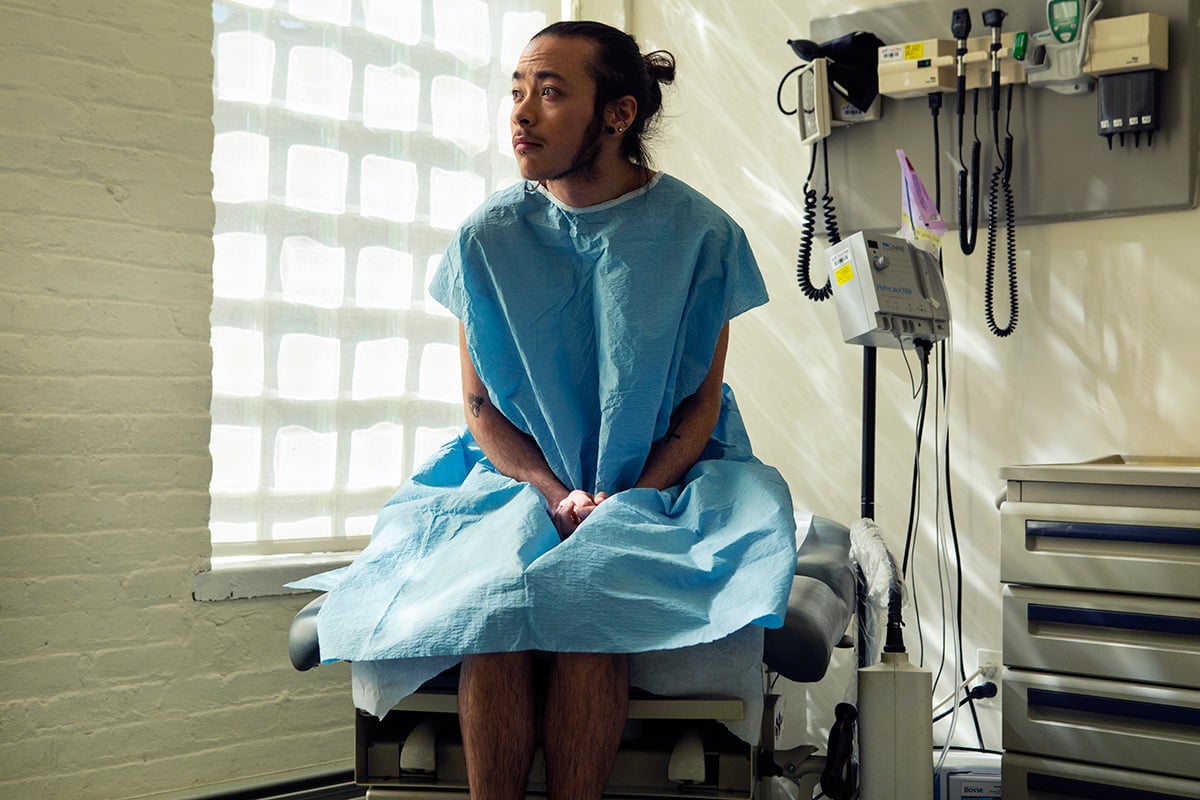COVID-19 is proving particularly perilous for LGBTQIA2S+ individuals who face both greater physical risks and increasing isolation.
“With COVID obviously comes an innate demographic vulnerability for certain oppressed peoples,” said Miranda Schreiber, a researcher for postgraduate medical education at the University of Toronto. “It leaves queer Canadians and people of colour particularly vulnerable to the negative effects of COVID and of social isolation.”
Systemic barriers and discrimination in the health-care system mean many more LGBTQIA2S+ individuals have underlying health conditions like heart disease or asthma that increase their risk of serious illness if they’re infected.
And a lack of knowledge among health-care providers about caring for the population often widens the health gap between queer individuals and the general population, particularly for racialized LGBTQIA2S+ people.
For example, not recognizing different symptoms of sexually transmitted infections among queer patients or advising on queer-specific safer-sex practices can sometimes mean infections go untreated, leaving people more vulnerable to COVID-19.
LGBTQIA2S+ Canadians are also less likely to go to the doctor because they fear discrimination, making it more likely a chronic condition may worsen.
“Almost all queer people have had bad experiences at the doctor’s,” said Schreiber.
A June 2019 report by the parliamentary Standing Committee on Health noted the absence of data around LGBTQIA2S+ health outcomes in Canada, but found higher rates of chronic illnesses and cancer.
Bisexual and lesbian women are more likely to have asthma and arthritis than heterosexual women, the report noted. Gay and bisexual men are more likely to have heart, liver or lung disease in Canada, and queer women are less likely to have had recent mammograms or pap smears, which leads to undetected cancers.
All those can increase the risk of being infected with COVID-19 and the severity of the illness.
Job discrimination and higher rates of homelessness, mental illness and substance use may also mean queer individuals are less likely to be able to receive adequate followup care.
“In Canada we presume we all have this equal access to health care,” said Schreiber. “But the way that we actually experience and engage with the system is totally contingent on how we interact with all these other [social] variables.”
Vancouver-based queer support non-profit Qmunity has already seen anecdotal evidence of job loss, income insecurity and stress resulting from the pandemic among the people using its support services, interim executive director Tim Agg told The Tyee in an email.
LGBTQIA2S+ people are also more likely to be harder hit by feelings of isolation and mental health challenges as support programs close and social distancing limits contact.
“LGBTQ and two-spirited people may already be grappling with mental health challenges related to stigma and discrimination,” said Elizabeth Saewyc, a professor of nursing at the University of British Columbia with a focus on health among vulnerable populations.
“When you add on top of that any distance from your support network, then that can actually create further challenges for people who are already struggling with some mental health issues,” said Saewyc.
Virtual access to mental health support is possible. But some LGBTQIA2S+ people may be in unsupportive housing or lack the privacy needed to seek support.
The problems can be compounded for LGBTQIA2S+ refugees and newcomers who are dealing with an unfamiliar system of support in a language they aren’t as comfortable using.
“They might be experiencing racism from people in Canada and might be experiencing transphobia and homophobia from their own communities,” said Kiana Reyes of MOSAIC, a Vancouver-based settlement non-profit.
“And it leads to increased social isolation because folks don’t want to seek out services that could be advantageous to them because of these issues they’re experiencing.”
Refugee claimants in particular may be navigating challenges like securing their legal right to be in Canada, and many newcomers come without family to support them. All of the organization’s counselling and support services for LGBTQIA2S+ newcomers have moved online.
Many also don’t have access to federal or provincial emergency supports. “The pandemic is bringing up everything challenging that’s happening on the surface [for newcomers], and also everything that’s below it as well,” said Reyes. She feels many of the legal and social challenges of being new to Canada aren’t spoken about enough.
There is no data being collected about how the pandemic is affecting LGBTQIA2S+ individuals, but Saewyc says action can be taken now.
Immediately increasing mental health supports for LGBTQIA2S+ youth and adults is essential, she says, as is training health-care providers to provide inclusive and targeted care.
“I don’t think we need to wait for research about the potential different impacts of COVID-19 on certain groups to be able to take some steps to ensure that equity is still happening, and that people aren’t being further discriminated against or disadvantaged,” said Saewyc.
“We need to be thinking creatively about who’s experiencing further disruption and disadvantage and distress... because they don’t have the same social safety nets or social supports to help them get through it.”
Gathering data about the gender identities and sexual orientations of those affected by the pandemic would require trust between patients and physicians that takes a long time to build.
The research team Schreiber is a part of is working on a more comprehensive LGBTQIA2S+ care curriculum for medical students at the University of Toronto, which they hope can become a national standard for medical education in Canada.
Such a standard would ensure physicians have the tools to have inclusive conversations and be able to provide targeted care to their patients.
It’s a long-term step they hope can begin to chip away at one root cause of LGBTQIA2S+ health inequality in Canada.
“We just want to work to put queer health on people’s radars,” said Schreiber. “Because a lot of the time it’s not much of a focus at all.” ![]()
Read more: Coronavirus
















Tyee Commenting Guidelines
Comments that violate guidelines risk being deleted, and violations may result in a temporary or permanent user ban. Maintain the spirit of good conversation to stay in the discussion.
*Please note The Tyee is not a forum for spreading misinformation about COVID-19, denying its existence or minimizing its risk to public health.
Do:
Do not: